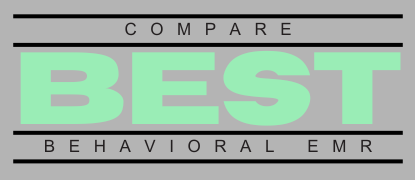Transitioning your behavioral health practice to a new EMR system doesn’t have to feel overwhelming. Whether you’re looking to upgrade your current behavioral health EMR software or switch providers entirely, careful planning and thoughtful strategies can ensure the transition is seamless and stress-free. A smooth transition can significantly enhance your practice’s efficiency, improve patient care, and reduce administrative burdens.
In this guide, we’ll outline clear, actionable steps for behavioral health practice owners and clinicians to ensure a successful EMR transition—helping your practice thrive and grow.
Why Make the Switch to a New Behavioral Health EMR?
Before diving into the transition steps, it’s important to understand why practices decide to switch their behavioral health EMR system. Common reasons include:
- Limited Functionality: Your current EMR lacks essential features like integrated telehealth, intuitive progress notes, or streamlined billing and reporting.
- Poor User Experience: Clinicians struggle with cumbersome interfaces, long documentation times, or constant technical glitches.
- Scalability Issues: Your practice is growing, and your current EMR system can’t accommodate new locations or additional providers.
- Non-compliance Risks: Your current system doesn’t adequately ensure compliance with changing regulatory guidelines like HIPAA or Meaningful Use criteria (HealthIT.gov).
Step-by-Step Guide for a Smooth Behavioral Health EMR Transition
Step 1: Clearly Define Your Practice Goals and Needs
Before you begin shopping for a new EMR, clearly outline your practice’s needs and goals. Engage your clinical and administrative teams to identify pain points with your current system and create a list of must-have features for your new behavioral health EMR.
Consider questions like:
- What documentation tools do clinicians need to be more efficient?
- Does the EMR integrate smoothly with existing billing and practice management software?
- How important are telehealth capabilities for your practice?
- What specific reporting or analytics capabilities do you require?
Step 2: Research and Evaluate New EMR Vendors
Once your team has identified your requirements, start researching behavioral health EMR vendors. Look for user reviews, case studies, and peer recommendations. In particular, evaluate vendors based on:
- Ease of use and clinician satisfaction
- Comprehensive training and customer support availability
- Flexible integration with existing software tools
- Reputation and proven success within the behavioral health industry
As you narrow your options, schedule demos and request references from similar-sized practices to better understand the EMR’s real-world performance.
Step 3: Develop a Realistic Implementation Timeline
Switching EMR software requires time for data migration, staff training, and potential workflow adjustments. Work closely with your selected vendor to establish a detailed and realistic implementation schedule. Typically, transitioning to a new behavioral health EMR can take anywhere from a few weeks to several months, depending on the complexity of your data and the size of your practice.
Step 4: Prepare Your Staff with Comprehensive Training
Thorough and engaging training is critical for a smooth EMR transition. Provide ample opportunities for your team to learn the new system, ask questions, and practice documentation workflows. Consider a combination of training methods, including:
- In-person or virtual training sessions
- Interactive video tutorials and user manuals
- Designated internal “EMR champions” to support staff
Ensuring your staff feels confident and supported will greatly reduce stress and improve adoption rates.
Step 5: Execute a Phased Rollout (If Possible)
Consider a phased rollout, starting with one provider group or department before fully transitioning the entire practice. This approach allows you to identify potential issues early, refine workflows, and provide additional training as needed. Gradual implementation reduces the risk of operational disruptions and allows staff to comfortably adapt to the new EMR system.
Step 6: Maintain Open Communication and Solicit Feedback
Throughout the transition, keep open lines of communication with staff. Regularly solicit feedback to address concerns and identify areas for improvement. This proactive approach helps ensure a positive experience for all stakeholders involved and ultimately contributes to the long-term success of your EMR transition.
Common Pitfalls to Avoid When Transitioning Your EMR
By being aware of common pitfalls, you can better plan to avoid them:
- Underestimating Data Migration Complexity: Work closely with your vendor to clearly understand data migration requirements and timelines.
- Inadequate Training: Invest in comprehensive training to avoid confusion, user frustration, and decreased productivity post-launch.
- Ignoring Staff Input: Staff engagement is crucial—listen to their insights and involve them in the decision-making process.
Maximizing Your EMR Investment for Long-Term Success
After successfully transitioning to a new behavioral health EMR, regularly review your EMR’s performance and ensure it continues meeting your practice’s evolving needs. Stay engaged with your vendor and leverage ongoing training opportunities to optimize your workflows and maximize your return on investment.
Conclusion: Streamline Your Behavioral Health EMR Transition
Transitioning to a new behavioral health EMR system can significantly enhance your practice’s efficiency, patient care, and staff satisfaction. By clearly defining your goals, carefully selecting the right vendor, developing a realistic timeline, and prioritizing comprehensive training, you can smoothly navigate the transition process.
If you’re ready to take the next step and want expert guidance tailored specifically to your practice needs, request a free practice analysis. Our EMR experts will review your unique requirements and recommend the best solutions to help your behavioral health practice thrive.
